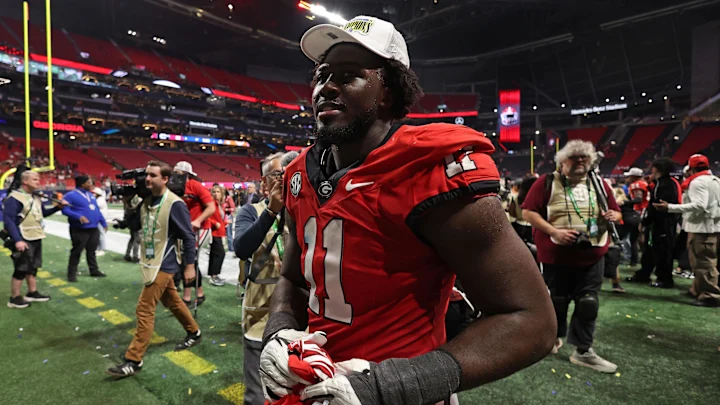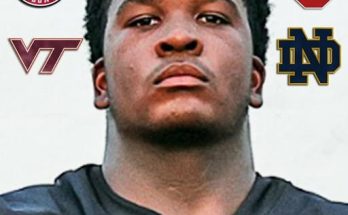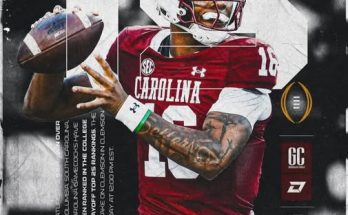The NFL Draft is a breeding ground for hope, especially for franchises like the Arizona Cardinals who are rebuilding from the ground up. With a strong focus on improving their defensive core in the 2025 NFL Draft, the Cardinals selected some high-upside prospects who could be foundational pieces for years to come. However, the path to immediate stardom—especially to earning the coveted Defensive Rookie of the Year (DROY) award—is anything but straightforward.
Arizona’s defensive draftees, headlined by versatile pass-rusher Darius Robinson and hard-hitting cornerback Max Melton, bring immense potential to the desert. But that potential comes with hurdles—ranging from team context and competition across the league to the sheer difficulty of transitioning to the NFL. As these rookies prepare to take the field, they must navigate an array of challenges that could make their quest for individual accolades like DROY particularly difficult.
1. The Legacy and Reality of the Defensive Rookie of the Year Award
Before examining the individual cases, it’s important to understand the nature of the DROY award. Historically, the honor is given to rookies who not only perform at a high level statistically but also play on defenses that allow them to shine within a clear and consistent scheme.
Players like Micah Parsons, Sauce Gardner, and Chase Young won the award not just because they were great, but because their teams allowed them to operate freely in roles tailored to their strengths. In contrast, rookies playing on weaker or transitional teams often face inconsistency in snaps, schemes, and roles, making it harder to produce the type of elite season required for DROY consideration.
That reality could be the Cardinals’ first major obstacle.
2. Darius Robinson: Talented But Facing Transition
Arizona’s top defensive selection in 2025, Missouri defensive lineman Darius Robinson, was taken early in the second round with the expectation of injecting power and versatility into the front seven. Robinson was a standout in the SEC, with his 2024 season seeing him record 8.5 sacks and 14 tackles for loss, showcasing his ability to disrupt both the pass and the run.
The Challenge: Robinson’s transition to the NFL could be complicated by the Cardinals’ hybrid defensive scheme under head coach Jonathan Gannon and defensive coordinator Nick Rallis. While Robinson played both inside and on the edge in college, the NFL demands more specialized execution, and if the Cardinals aren’t clear in how they deploy him, Robinson might struggle to build the kind of statistical profile that grabs national attention.
Additionally, Arizona’s defensive line lacks a true superstar who can consistently draw double teams, meaning Robinson may face more one-on-one blocking than expected—a double-edged sword that could help or hurt, depending on his NFL adjustment.
Snap Count and Rotation Woes: Another hurdle Robinson may face is shared snaps. Arizona has invested in rotational depth up front, including returning veterans like Jonathan Ledbetter and Leki Fotu. While depth is good for team success, it can dilute the opportunity for a rookie to compile eye-popping numbers needed to win DROY.
3. Max Melton: Coverage Duties in a Tough Division
Rutgers cornerback Max Melton was another high-value selection for Arizona. He brings speed, athleticism, and a knack for making plays on the ball—traits that can translate well to the NFL. But Melton walks into one of the toughest divisions for a rookie cornerback, especially considering the receivers he’ll be tasked with covering.
NFC West Receivers: The Cardinals will face the likes of Cooper Kupp and Puka Nacua (Rams), DK Metcalf and Tyler Lockett (Seahawks), and Brandon Aiyuk and Deebo Samuel (49ers) twice per season. That means Melton could find himself regularly tested by elite route runners and physically dominant pass catchers.
The Stats Dilemma: Cornerbacks rarely win DROY unless they either completely lock down their side of the field or create massive turnover numbers. Sauce Gardner in 2022 was a rare case, and even he needed a perfect confluence of elite coverage grades, media buzz, and team success to earn the honor. For Melton, who will likely start off as CB2 or even CB3 depending on camp battles, the snaps and targets may not consistently be there.
Scheme Fit: The Cardinals are likely to play a lot of zone coverage to mask inexperience in the secondary, which might prevent Melton from getting the kind of high-leverage man-to-man reps that create highlight plays and opportunities for interceptions.
4. The Competition Is Fierce in 2025
The 2025 NFL Draft class was stacked defensively. Across the league, there are premier rookies in better situations statistically and schematically than Arizona’s top picks. Players like:
- Jared Verse (Atlanta Falcons): A pass-rusher with a perfect landing spot on a defense poised to compete in the NFC South.
- Kool-Aid McKinstry (Philadelphia Eagles): A shutdown corner with a Super Bowl-ready defense around him.
- Dallas Turner (Washington Commanders): Already being featured as a key starter in a Jack Del Rio-style aggressive scheme.
These players not only have the skill set but are also in environments that will maximize their statistical output and visibility, two key components to winning the award.
This level of competition increases the pressure on Cardinals rookies to not just play well—but to somehow outshine players with better infrastructure around them.
5. Arizona’s Defensive Reputation and Visibility
Let’s be honest: brand recognition matters when it comes to awards. The Cardinals ranked near the bottom of the league defensively in 2024, giving up big plays and struggling in red zone situations. While improvement is expected, the leap may not be significant enough to make voters take notice of individual players from an otherwise middling unit.
Media Coverage and National Spotlight: The Cardinals are unlikely to be in many primetime games, meaning their rookies won’t get the same type of national exposure as players from bigger-market or more competitive teams. When you’re competing for an award decided in large part by media members, that lack of spotlight can hurt.
6. The Slow-Burn Reality of Rookie Development
Both Robinson and Melton may be long-term foundational pieces for Arizona, but rookies often don’t hit the ground running. The speed, complexity, and physicality of the NFL game can take time to adjust to—especially for defenders transitioning from programs without elite competition week in and week out.
Robinson will need to refine his pass-rush plan and improve his leverage technique, while Melton will need to sharpen his anticipation and discipline in coverage. These are things that come with reps, mistakes, and coaching—not things easily accelerated in one preseason.
This natural rookie curve works against the DROY race, which typically rewards players who make an immediate splash, not those who gradually grow into their role.
7. A Silver Lining: Role and Opportunity
While the odds are against Arizona’s rookies in the DROY race, there are reasons for hope. The Cardinals are rebuilding, and that means they’ll likely give their young players every opportunity to learn and develop on the field. Snap counts may be inconsistent early, but as the season wears on, guys like Robinson and Melton could find themselves as key contributors.
If Robinson can get 7+ sacks and a few forced fumbles, or if Melton picks off 4-5 passes and deflects 15 more, they might not win DROY—but they could enter the Pro Bowl conversation and certainly earn All-Rookie honors.
For a franchise looking to turn the page, that might be just as meaningful.
Final Thoughts: Building the Right Way, Award or Not
Winning Defensive Rookie of the Year is a dream for any first-year defender, but the true measure of a draft pick lies in long-term impact, not short-term accolades. The Arizona Cardinals are laying bricks for the future, and players like Darius Robinson and Max Melton are vital to that foundation—even if they don’t take home hardware in Year 1.
The challenges are real: from scheme transitions and tough competition to media invisibility and growing pains. But if these rookies embrace their roles, earn starting spots, and develop under Jonathan Gannon’s defensive-minded staff, they could prove to be cornerstones of a defensive resurgence in Arizona.
So while the DROY may be out of reach in 2025, the journey toward something even more important—a dominant defense in the desert—is well underway.



